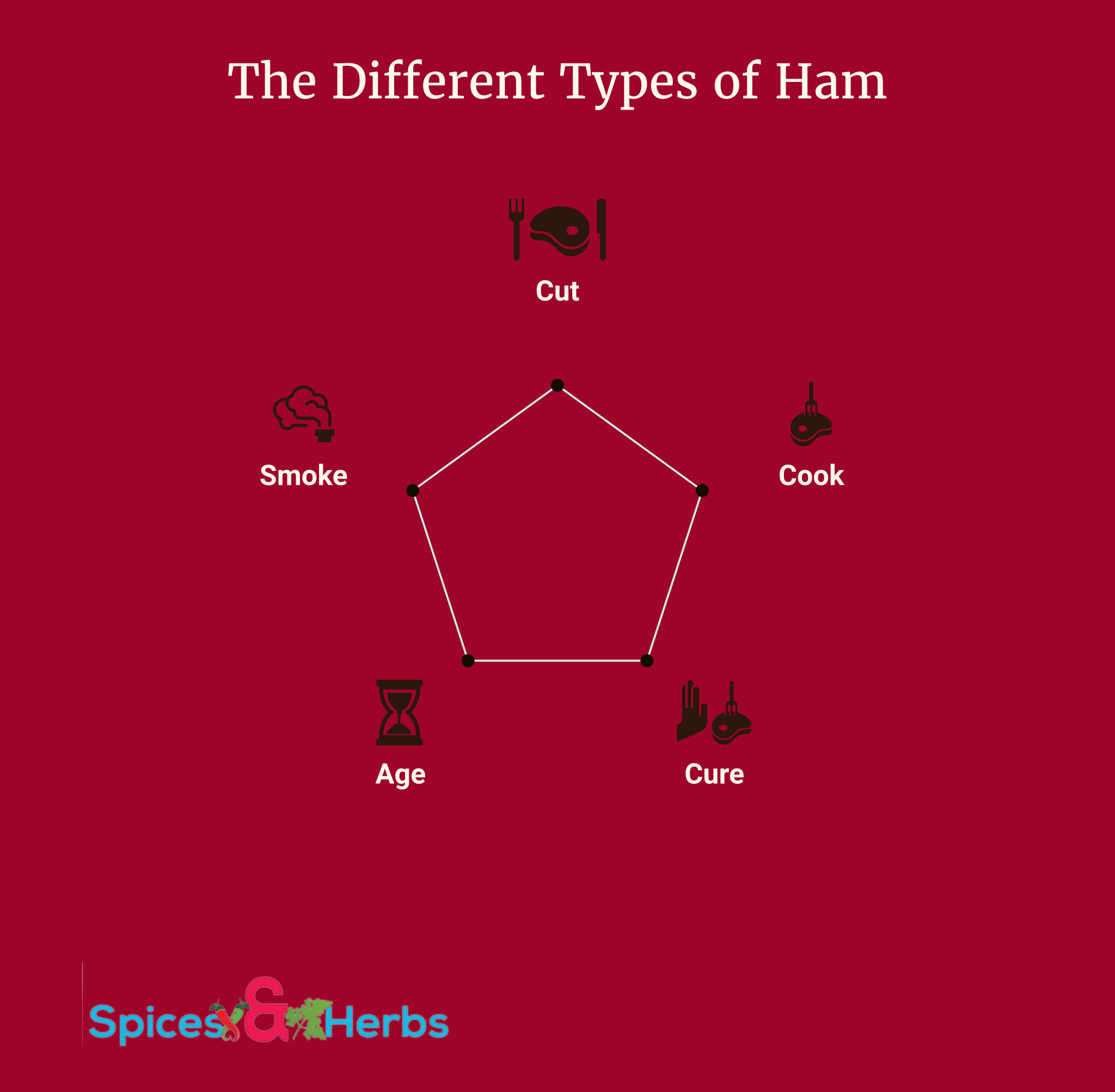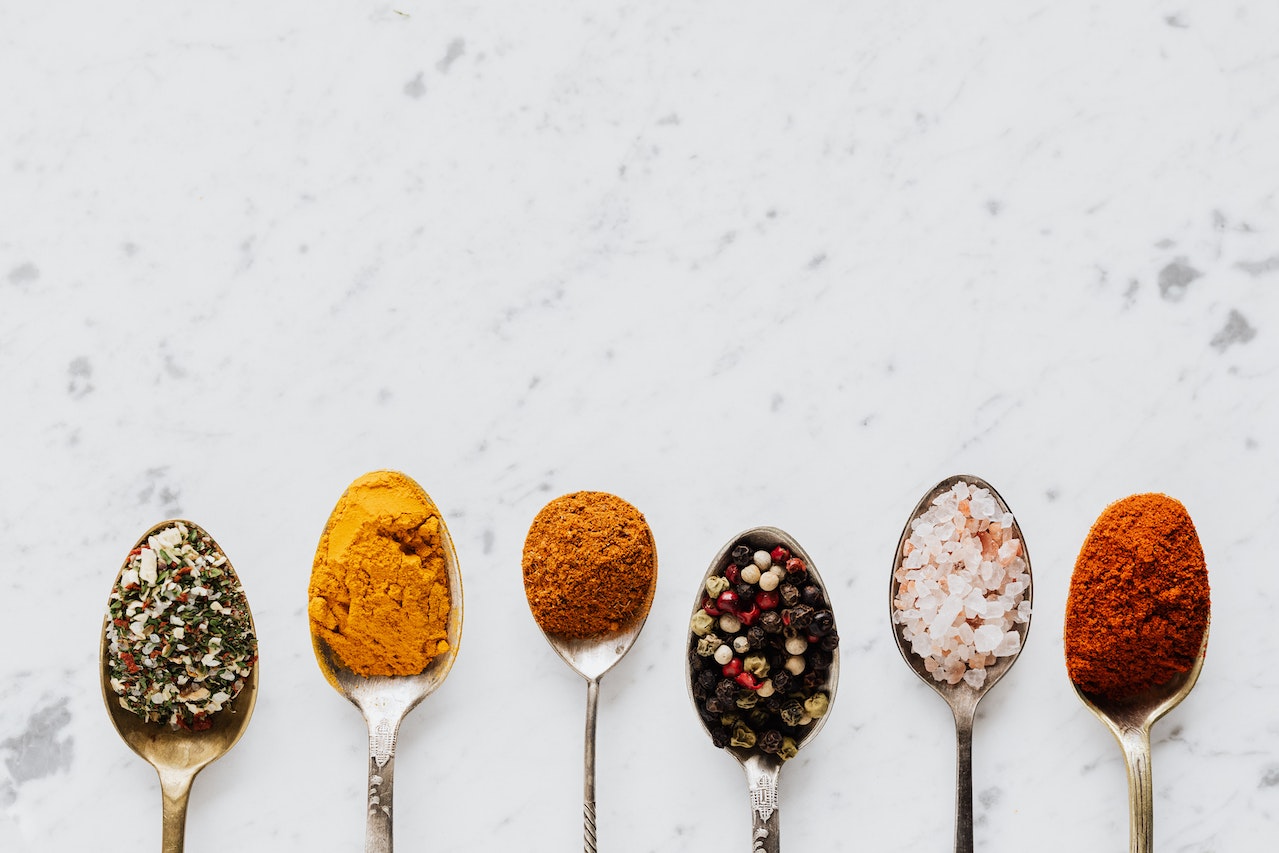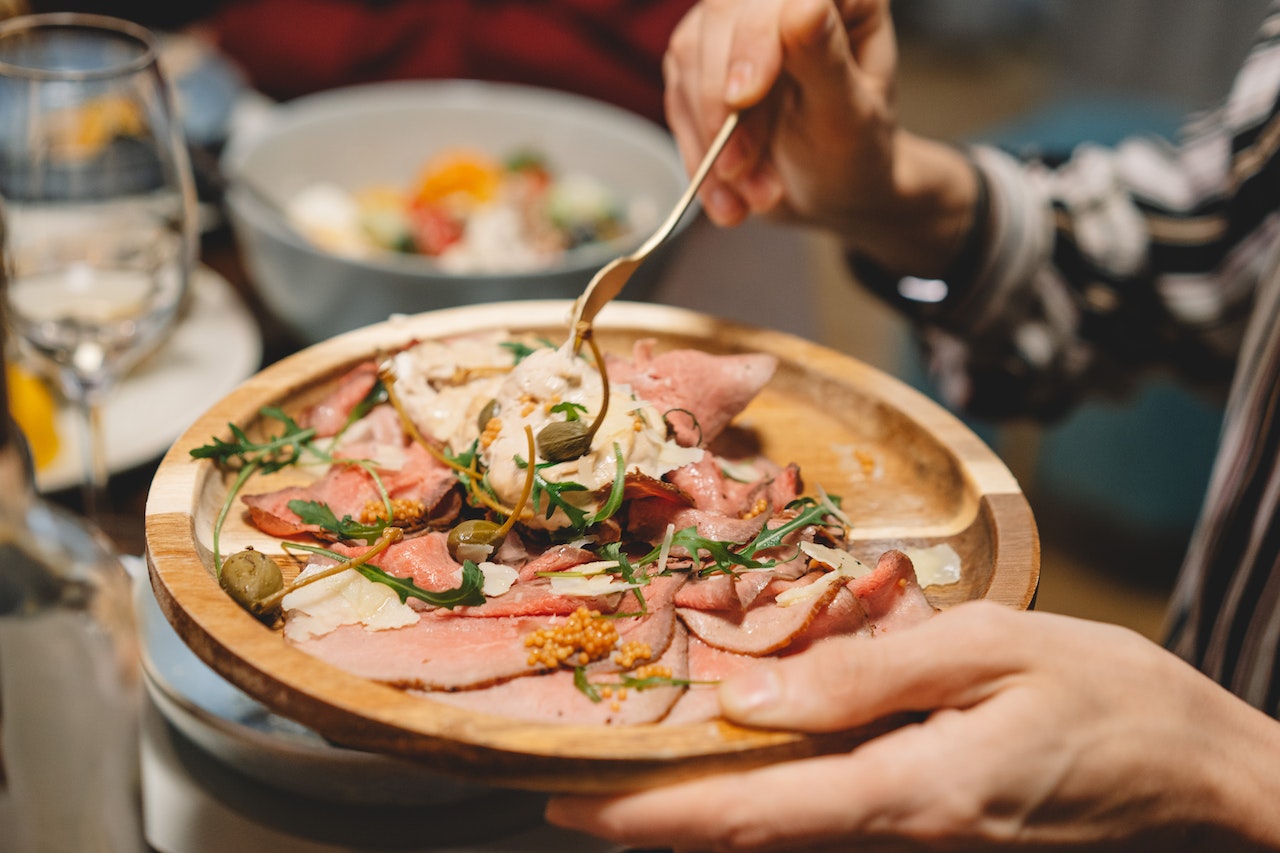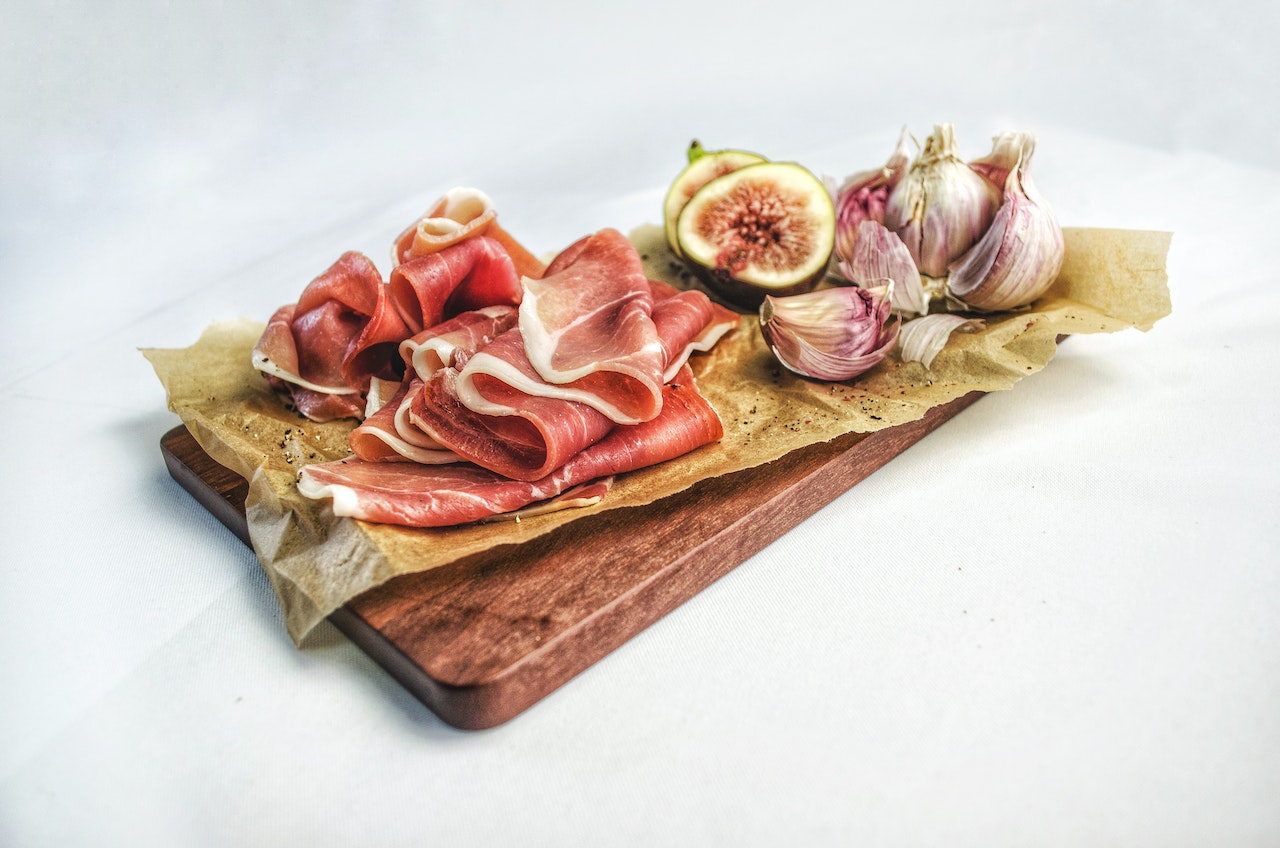Do you want to know the best spices to enhance the flavor of your ham? Ham is widely recognized for having a rich, savory, and occasionally smoky taste profile. Although ham is already seasoned, adding extra seasonings can improve the flavor of this well-known preserved meat.
Whether the star of a holiday feast or cut up in a sandwich, ham is a delicious and adaptable meat that may be enjoyed in various ways. Adding spices is one of the finest methods to improve the flavor of ham. The sweetness and savory ham aromas may be enhanced with a well-chosen spice combination, giving each mouthful more depth and complexity.
The greatest spices for ham, their distinctive taste characteristics, and how to employ them to make delectable and enduring recipes are all covered in this article. Whether you’re an experienced chef or a kitchen newbie, the world of spices is a great place to look for ideas for your following ham recipe.
What is Ham
Ham is the hind leg of a hog that has been processed as food and can be eaten either raw or after being salted, smoked, or dried. The two hams make up around 18 to 20 percent of a weight of a hog carcass. As picnic hams, shoulder hams, Callies, & Californias, shoulder sections of hog carcasses are often processed and marketed in the United States; however, these products are subpar compared to real ham.
Most ground ham spreads, marketed under several brand names, are made from processed ham trimmings and hog shoulders. Ham is a convenient source of high-quality animal protein that, in this regard, compares favorably to fine beef. Depending on fat content, it has an accessible energy range of 2,600 calories per pound. It is a fantastic source of calcium, phosphorus, iron, riboflavin, niacin, and thiamine (vitamin B1).
One of the oldest meats consumed by civilized peoples, the ham was popular throughout Asia and Europe, except for places where it was forbidden by religious law. The earliest European immigrants brought it to the American continents, and it quickly gained popularity on North American farms where home-cured hams were a popular wintertime custom. Nonetheless, putrefaction losses were substantial, and product quality was inconsistent.
The Different Types of Ham

It will be easier for you to choose a ham to add spice if you consider the following factors which produce hams:
🥩Cut
Hams can be purchased with or without the bone. The butt end of a ham is slimmer and simpler to slice, whereas the shank end is often fattier.
🥩Cook
Whether ham is fully cooked, half cooked, or raw is another distinction you’ll notice. The ham must have reached an inner temperature of a minimum of 148 F to be deemed completely cooked and at least 137 F to be deemed half cooked. While completely cooked hams only need to be heated, uncooked & partially cooked hams must bake before serving.
🥩Cure
The hams are cured, which might imply wet-cured (brined) or dry-cured unless offered as fresh. The most popular ham type is brine-cured, prepared by soaking the meat in a liquid-salt solution before smoking. Dry-cured ham is produced by completely covering the surface of the pork with salt, allowing the salt to infiltrate the meat and preserve it, and then storing the product.
🥩Age
Certain hams are matured for a richer flavor, which entails rigorous curing, smoking, and hanging processes throughout one to 7 years. Before eating, the mold covering them must be scraped & cleaned off. These hams are often costly and have a robust, well-rounded taste.
🥩Smoke
Hams are often cold-smoked for several days or weeks at temperatures below 100 F.
The Best Spices for Ham

It’s exciting to try out several spice combinations until you find the one that eventually makes you exclaim, “This is the one.” Ham is renowned for having a rich, savory, and occasionally smoky taste profile. Although ham is already seasoned, adding extra seasonings can improve the flavor of this well-known preserved meat. Some of the top ham spices are listed here.
◻️Bay Leaves
Bay leaves, also known as laurel leaves, have a strong, bitter flavor with hints of floral and herb. It is an excellent source of potassium, iron, calcium, magnesium, and vitamins A and C. It enhances digestion, lowers blood sugar levels, and eases respiratory issues. Also antimicrobial are bay leaves.
It is made up of plant leaves indigenous to the Mediterranean area and members of the Lauraceae family of flowering plants. You may use the leaves raw, dried, or crushed. Eight bay leaves are used in this brine solution; while this may seem like a lot, it works out well, given the volume of liquid. Your ham will have a rich, delicate taste from the bay leaves.
◻️Cayenne
This crimson powder has a slight scent and is quite peppery. Beta carotene, lutein, choline, cryptoxanthin, & vitamins E and C are present. Cayenne helps combat germs, manage weight loss, relieve pain, and enhance the immune system. Cayenne from dried cayenne peppers that have been ground into a powder. These red peppers have an extended, slender appearance with a rounded tip. After being dried, the peppers are processed into a powder.
If you can master the glazing portion of the recipe, your ham will unquestionably look like a million dollars. Just one teaspoonful of cayenne pepper for the dish, but if you want it hot, feel free to add more. Don’t worry since there is a lot of sugar & orange juice because those will balance the cayenne’s heat.
◻️Cajun
This Louisiana-born spice mixture often includes cayenne, oregano, garlic powder, paprika, and salt. There is no established formula, and the number of spices can range from a few to a dozen. It is extremely spicy with a mild earthiness & smokiness. Also, because it contains a variety of spices, it is a rich source of fiber, vitamins, and minerals.
Depending on the combination of spices chosen, health advantages may vary from anti-inflammatory effects to relieving constipation to lowering the cancer risk. Throughout this honey-spiced glaze, Cajun truly shines with cloves, allspice, and nutmeg. The spice combination is rather moderate, so don’t worry. It contains exactly the right amount of spice to provide a lovely and delectable crust that will enhance the flavor of your ham.
◻️Cinnamon
Cinnamon has a spicy, sweet, and woodsy flavor with a hint of lemony overtones. It has a lot of powerful polyphenol antioxidants. In addition to having antibacterial and antifungal qualities, it helps control blood sugar levels. The inner bark of a spice called cinnamon is picked and dried. You may use it as a stick or ground.
Your ham will have a wonderful crust and a lovely scent thanks to this brown sugar & spice combination. The addition of cinnamon gives your ham a little bit more taste and an aromatic scent, in addition to adding another layer of flavor.
◻️Cloves
A fragrant spice with a flavor that is both sweet and bitter, cloves also have a notable level of heat. Antioxidants or other nutrients found in abundance in it aids in lowering inflammation, enhancing liver function, and reducing the risk of diabetes, heart disease, and some forms of cancer. It is the blossom buds of just a tree from the Myrtaceae family. It is used in herbal medicine, cigarette, & ant repellant in addition to cooking.
The cloves play an important role in this recipe for spice-rubbed ham’s flavor additions, but they also improve the ham’s overall presentation and make it seem like a true Christmas treat. Although the recipe directs you to slice after removing the cloves, I prefer to leave a substantial portion whole and with the cloves still attached for display.
◻️Cumin
The flavor of cumin is warm and earthy, with a hint of sweetness and bitterness. It includes vitamins A, Vitamin b, C, E, & K, calcium, iron, magnesium, & phosphorus. Cumin supports a healthy digestive system, regulates blood sugar, lowers bad cholesterol, and fights parasites and germs.
It originates from a member of the Cuminum cyminum family of plants. The seeds are harvested, dried, and can be crushed or utilized whole. This glaze of maple and mustard accentuates the taste of the many spices infused into the ham. Because of its richness, caramelization is possible, adding another layer of taste and improving the appearance of your hams.
◻️Coriander Seeds
Before breaking the seeds, dry roasting the coriander seeds enhances their nutty, spicy, lemony, and toasty flavor. It is an excellent source of minerals like copper, zinc, and iron, as well as others that assist in lowering bad cholesterol, strengthening the heart, and speeding up metabolism. The coriander plant, a member of the Apiaceae family, provides the seeds. It is related to celery, carrots, & parsley.
In this dish for roasted fresh ham, cumin & coriander seeds go along well. Their taste complements the acidity of the pineapple juice perfectly. Green beans look like a terrific, straightforward, and unique side dish option if you know the right spices for snaps.
◻️Fennel Seeds
The flavor of these seeds is slightly licorice-like and sweet. It has minerals, antioxidants, and fiber. Moreover, fennel seeds contain antibacterial, anti-inflammatory, and anti-cancer effects. They are the seeds of fennel, a flowering plant that belongs to the carrot family. The plant’s fruits, leaves, and bulbs are all utilized in cooking.
Even though this recipe specifies curing the pork for 1 to 3 days, it will be worthwhile, so have patience. The blend of herbs and spices is just delicious. A cooling addition is toasted citrus.
◻️Five Spice
The flavor of this spice mixture is sweet and licorice-like, with a hint of pepper. It has high calcium, iron, manganese, pyridoxine, vitamin A, and carotene levels. Moreover, because it’s a mixture of spices, there are a variety of health advantages as well, including the ability to reduce blood sugar, ease nausea, ease pain, and combat inflammation.
A mixture of spices known as five-spice powder embodies the tastes of sour, sweet, bitter, salty, & spicy. So, the typical ingredient list for the mix includes cloves, Sichuan pepper, cardamom, cinnamon, and star anise. Just make one of your own if you still need the pre-mixed five-spice. Whatever the situation, taste the ham with this orange & five-spice glaze. The seasoning is effective. Although the sticky, golden top is pleasing, you can smell its deliciousness.
◻️Paprika
The flavor of paprika varies according to the variety of pepper used; it can be mild, sweet, or spicy. It has antimicrobial characteristics, a significant quantity of vitamin E, and advantageous elements, including niacin & antioxidant carotenoid components. The powdered dried fruits of a Capsicum annuum plant, a warmer variety with softer and thinner flesh, make up this deep crimson powder.
This ham with spices is very fragrant! It oozes flavor from spice blends like paprika, from the salt solution to the glaze. Another great and original glaze base idea is to use currant jelly.
◻️Ground Ginger
The flavor of ground ginger is warm, spicy, and just a bit sweet. It includes special substances, including zingiberene, gingerol, shogaols, and zingerone. It assists in controlling blood sugar, nausea relief, and muscular ache reduction.
Simply put, ground ginger is dried ginger that has been pulverized. The Zingiberaceae family includes ginger, which can be consumed fresh, dried, and ground into a powder or candied. You will be in wonder after tasting this ham glaze. While it seems strange to combine ground ginger with rum, sugar, vinegar, and pineapple, the glaze works well when combined with allspice & chili flakes.
◻️Pepper Flakes
Flakes of red pepper have a distinct flavor that is somewhat harsh, earthy, and spicy. Beta carotene, kryptoxanthin, zinc, magnesium, & vitamins A, B-6, C, and E are all abundant. It aids in weight loss, strengthens the immune system, and improves skin and eye health. It is made of various spicy peppers, primarily cayenne pepper, that has been dried and coarsely powdered, leaving the seeds & skin fragments visible.
From the brine solution through the “paste” to the glaze, it is clear how tasty the ham recipe is already. Since Ann Burrell provided the recipe, you can anticipate a delicious taste combination. The list of components could appear frightening, but have patience and maintain your composure; it will be worthwhile.
◻️Peppercorn
Peppercorns have a taste that is citrus-like with hints of pine and lavender. Under the content of hydroxy-alpha sanshool, it also exerts a numbing effect. Copper, iron, zinc, magnesium, potassium, & phosphorus are all present in good amounts. It aids in promoting circulation, easing discomfort, removing inflammation, treating toothaches, and safeguarding the stomach.
Despite their name, Sichuan peppers are not related to black pepper and chili peppers but are a Rutaceae family member. Serve this ham with the gooey honey-Sichuan glaze to make any day joyful. It tastes incredible and looks gorgeous.
◻️Mustard
Although mustard’s sourness makes it a fantastic sandwich topping, it also works perfectly as one of the primary flavors in ham glaze. Although prepared mustard will also work, dry mustard is the best option for many chefs. The sweeteners frequently for use in ham glazes go very well with mustard. The yellow of mustard can also aid in bringing out the golden hue of roasted ham.
Reasons for Adding Spices to Ham

Adding spices to hams is a great method to enhance the flavor of this traditional dish. Ham is a flexible meat that may be cooked in various ways, including roasting, grilling, and presenting cold slices. Your family and friends will love the flavor that adding spices to your ham may help generate. There are several alternatives available to you when selecting spices for your ham.
Common options include black pepper, onion powder, garlic powder, cumin, paprika, and thyme. These spices can be utilized singly or in combination to make a blend tailored to your specific taste preferences. Mix the spices in a mixing bowl before adding them to your ham. Once you’ve prepared your spice mixture, rub it across the ham’s surface.
The spices can be dispersed evenly with a brush or your hands. The ham should be refrigerated for several hours or overnight to allow those spices to permeate the flesh and impart flavor. Once the ham has finished cooking, slice it and serve it. The meat will absorb your spices, giving it a flavorful and enticing scent that will impress your visitors. With various options, such as mashed potatoes, roasted vegetables, or a crisp salad, ham is a fantastic protein.
Hams may be spiced up quickly and delightfully to improve this traditional meal. Whether you’re preparing sliced cold cuts or a whole ham, adding spices will help produce a distinctive and enjoyable flavor that your family & visitors are sure to enjoy.
Spiced Ham Recipes
Here are some of the favorite spiced ham recipes to enjoy.
🍴Mustard Glaze and Brown Sugar Ham
Ham with a mustard-brown sugar glaze. Combine 1/2 cup brown sugar, two teaspoons mustard, and 1/4 teaspoon each of crushed cloves & cinnamon. For around 20 minutes per pound, score the ham & bake it in the oven. The glaze should be applied to the ham during the final Thirty minutes of cooking.
🍴Spiced Rum Ham
Mix 1/2 cup brown sugar, 1/2 cup spiced rum, one teaspoon ground cinnamon, two tablespoons honey, one teaspoon ground cloves, & 1/2 teaspoon powdered ginger. The mixture should be heated in a pan until the sugar melts. Every 30 minutes, baste the ham with the glaze as it bakes in the oven for around 20 minutes per pound.
🍴Clove Glazed and Pineapple Ham
Ham with a Pineapple & Clove Glaze. Mix 1 cup pineapple juice with 1/4 cup honey, 1/2 cup brown sugar, two tablespoons vinegar,1/4 cup mustard, & 1/2 teaspoon crushed cloves in a pot. Cook the mixture until it thickens. Place the ham in a roasting pan after scoring it. Bake the ham for around twenty minutes per pound after glazing it.
🍴Cheese and Spiced Ham Sliders
Slice a packet of Hawaiian buns horizontally to make spiced cheese and ham sliders. On the bottom half of the rolls, apply a combination of butter, mustard, & Worcestershire sauce. Swiss cheese and spicy ham slices are arranged on top of the buns. Put the top side of the rolls back on and spread butter on them. Bake the buns in the pan until golden brown, and the cheese has melted.
🍴Potato Casserole and Spiced Ham
On a baking dish, arrange slices of potatoes and ham that have been flavored. Dissolve four tablespoons of butter in a pot and stir in 4 teaspoons of flour. 2 glasses of milk should be slowly added while whisking the sauce. Add a pinch of pepper and salt to taste, along with 1/4 teaspoon each of ground nutmeg and cloves. Over the potatoes & ham, pour the sauce. Bake 350 degrees until the top turns golden brown and the potatoes are soft.
Benefits of Adding Spices to Ham

Adding spices to ham can have a number of advantages, such as:
👉Enhanced Flavor
Spices may give Ham a taste boost to increase its appeal as food. Spices may contribute a variety of taste qualities, including earthiness, sweetness, and fire.
👉Aroma
The scent of spices can be mouth-watering and titillating to the senses. The flavor of the seasonings can also improve the entire ham-eating experience.
👉Preserving
Some spices may increase ham’s shelf life since they have inherent preservation characteristics. For instance, adding salt as well as other curing spices to ham might assist in keeping it fresher longer.
👉Health Advantages
Many spices offer health advantages. For instance, ginger and turmeric’s anti-inflammatory properties may help lessen pain and inflammation. It has been demonstrated that cinnamon helps control blood sugar levels.
👉Variety
Your meals may be made more fascinating and pleasurable to consume by using a variety of spices. In addition, various spices may enhance various ham varieties, enabling you to create various taste profiles according to your preferences. Overall, ham’s flavor, fragrance, and nutritional value may all be improved by adding spices, making it a tasty and wholesome complement to your meals.
Ham Glazing Instructions
Ham’s smoky, savory flavor is balanced by a small sweetness. But try to think outside of gloopy, sugary-sweet glazes and be a bit more daring. The sweet basis for glazes that lend luster and distinctive taste include hot pepper jelly, peach preserves, & maple syrup. A typical ham is changed up and made genuinely unforgettable with delectable additives like aromatics, herbs, and spices.
➛Clean the Ham
You may apply a coating of the jerk & peach glazes directly onto your sliced ham. Brush only a thin coating of maple syrup as well as the spice rub onto the ham to prepare the barbecue glaze. Leave the spices separate so they can form a wonderful crispy surface akin to the “bark” of slow-cooked pork shoulder. Once the ham has finished baking, use any leftover maple syrup and approximately one tablespoon of a spice mixture to make a complementing sauce to serve with the ham. You won’t use all the glaze at this stage, just enough to fully cover the ham.
➛Roast the Ham
Put the ham on a rack in a roasting pan & fill the pan with 2 cups of water. To retain the steam and keep the ham extra moist, carefully cover the pan with two to three layers of foil. 350°F for an hour of roasting.
➛Baste the Ham
After taking off the foil, cover the ham with another coat of maple syrup or glaze. Return the ham to the oven, raise the heat to 400°F, and roast it uncovered for another Forty to Sixty minutes, basting it with pan juices as needed (optionally every 15 minutes). If you use an instant-read thermometer to check the internal temperature of the ham, it should be 135°F when it is finished.
Frequently Asked Questions
What method should I use to season my ham?
Based on your preparation, there are a few different ways to season ham. While some recipes advise cutting the ham’s surface and stuffing whole cloves into incisions, others advise putting a spice mixture on the entire ham before cooking. Generally speaking, it’s a smart option to divide the spices equally in order to have a well-balanced flavor profile.
Which seasonings go well with ham?
Cloves, mustard powder, garlic powder, & brown sugar are some of the more well-known spices. The best spices to put on ham can also vary based on personal choice and the sort of ham being cooked.
Should I spice my ham with fresh or dried spices?
Both dried and fresh spices can be used on ham, but dried spices are often more popular. This is so that they may be used in big amounts and because dried spices are simpler to store and have a more highly concentrated flavor. On the other hand, fresh herbs and spices may give your ham a great, vibrant flavor if you’ve access to them.
Can I spice my ham using a pre-made spice mix?
Certainly, using pre-made spice mixes is a practical approach to flavor your ham. Just verify the ingredients and read the label to ensure that spices will enhance the flavor of the ham.
Should you season the ham first?
Mixing pepper, salt, garlic, and herbs always works great. Put the it in a pan and coat it with your preferred seasonings. After the temperature inside reaches 160 F, cover with foil and bake in a 350° F oven for about 20 minutes per pound.
Final Thoughts
Using the right spices for ham may significantly improve its flavor and scent. While many spices and herbs may be used to spice ham, the most common ones include cloves, mustard, allspice, and ginger. These spices give the ham a delicious kick and enhance its salty, rich flavor. Finally, personal liking and the ideal flavor profile will determine the spices used. Experimenting with various spice blends may be a fun way to find new and fascinating tastes that can enrich any ham meal. Do you want to know the best spices for oatmeal? Click Here!

